McDonnell Douglas DC-10 Swissair Bookends
Production Time 9 to 10 weeks
Shipment is by FedEx, UPS or DHL International Express Courier with a normal door-to-door delivery time worldwide of within 2-3 business days after dispatch. Due to the current volatility of world fuel prices, the amount mentioned here is our best estimate for DHL and UPS and may be subject to change at the time of shipping.

Model Description: McDonnell Douglas DC-10 Swissair Bookends Replica Scale Custom Model
Manufacturer: McDonnell Douglas
$239.50
Production Time 9 to 10 weeks
-
United States dollar ($)
-
Pound sterling (£)
-
Euro (€)
-
Australian dollar ($)
-
Canadian dollar ($)
-
Singapore dollar ($)
-
Swiss franc (CHF)
-
Japanese yen (¥)
-
Danish krone (kr.)
-
Hong Kong dollar ($)
-
Norwegian krone (kr)
-
Swedish krona (kr)
-
United Arab Emirates dirham (د.إ)
General Product Description
The 'Specials' section of our website is dedicated to more unusual or miscellaneous models both in terms of the materials used in their manufacture and in their size and structure. For example, you will see large fiber or fibre glass models for use on restaurants and bars, model airplanes fashioned as book ends, fork lift truck models and wooden fish models. Our McDonnell Douglas DC-10 Swissair Bookends modelk exhibits unique, unrivalled quality and detailed design to come as close as possible to the accuracy of the actual item. The model is made of the finest materials and beautifully finished to give this museum quality masterpiece. Our craftsmen and gifted artisans ensure that our finely handcrafted models match the precise blueprint details of the original item. This top-quality McDonnell Douglas DC-10 Swissair Bookends replica will surely enthrall anyone who receives this stylish display as a gift.
We can also make bespoke scale replicas of any other private / civil commercial airliner or airliners, helicopter, glider, gliders with engines, military jet, warplane jets, propeller warplanes, biplane, triplane, tail fin, spacecraft, rocket or NASA model you require in any airline, military or civilian livery or colors. We also produce model airships, blimps, dirigible, blimps, boat, and ship collectibles. Wall plaque or seal for military, government or private customers. Wholesale and retail and general customization inquiries welcome. Again, by clicking here to contact us just let us know exactly what you need.
The Swissair McDonnell Douglas DC-10: A Classic in Aviation History
The McDonnell Douglas DC-10 aircraft holds a notable position in the annals of aviation, particularly as part of the fleet of Swissair, Switzerland’s former national airline. This tri-jet aircraft was renowned for its robust engineering, technological advancements, and significant role in shaping international air travel during its time. Here, we delve into the salient features of the DC-10 that made it a cornerstone of Swissair’s operations.
Technological Innovation and Design:
The McDonnell Douglas DC-10 was introduced during the early 1970s as a response to the increasing demands for medium- to long-range, high-capacity airliners. It featured a distinctive tri-engine configuration with one engine mounted under each wing and a third engine at the base of the vertical stabilizer. This design was pivotal for the aircraft’s performance, offering enough power to handle transatlantic flights efficiently, which were a significant part of Swissair’s route network.
Capacity and Comfort:
With a capacity to seat between 250 and 380 passengers, depending on the model and cabin configuration, the DC-10 was one of the largest aircraft of its time. Swissair utilized this capacity to offer enhanced comfort, with more legroom and improved on-board services compared to many of its contemporaries. The cabin was designed to be quieter and more comfortable, thanks to advances in soundproofing and air conditioning technologies.
Safety Features:
Despite its initial challenges, including a few high-profile accidents that raised questions about its safety, the DC-10 underwent numerous upgrades and modifications to enhance its reliability and safety. Swissair was among the airlines that implemented these changes swiftly, equipping its fleet with advanced navigational and safety equipment that set high standards within the industry. Features such as redundant hydraulic systems and improved emergency equipment contributed to the DC-10’s enhanced safety profile over time.
Operational Efficiency:
The DC-10 was designed with operational efficiency in mind. It featured advanced avionics systems for its time, which included sophisticated autopilot capabilities and early-generation flight management systems. These technologies helped reduce pilot workload and improved fuel efficiency, making the DC-10 a favorite for airlines concerned with both safety and cost-effectiveness. Swissair benefited from these features, enabling it to maintain a competitive edge in the international market.
Legacy and Retirement:
Swissair’s DC-10s served the airline with distinction from the early 1970s until their gradual phase-out in favor of more modern aircraft like the MD-11 and later the Airbus A330. The retirement of the DC-10 marked the end of an era for Swissair, coinciding with broader shifts in the airline industry towards more economically and environmentally sustainable aircraft.
The McDonnell Douglas DC-10 remains a significant part of aviation history. For Swissair, it was a symbol of technological progress and operational excellence. Even as newer technologies have taken its place, the legacy of the DC-10 continues to influence aircraft design and airline operations globally. The story of the DC-10 is a testament to the evolution of the aviation industry and a reminder of how classic engineering can meet the demands of its time.
| Weight | 6 kg |
|---|---|
| Dimensions | 16 in |


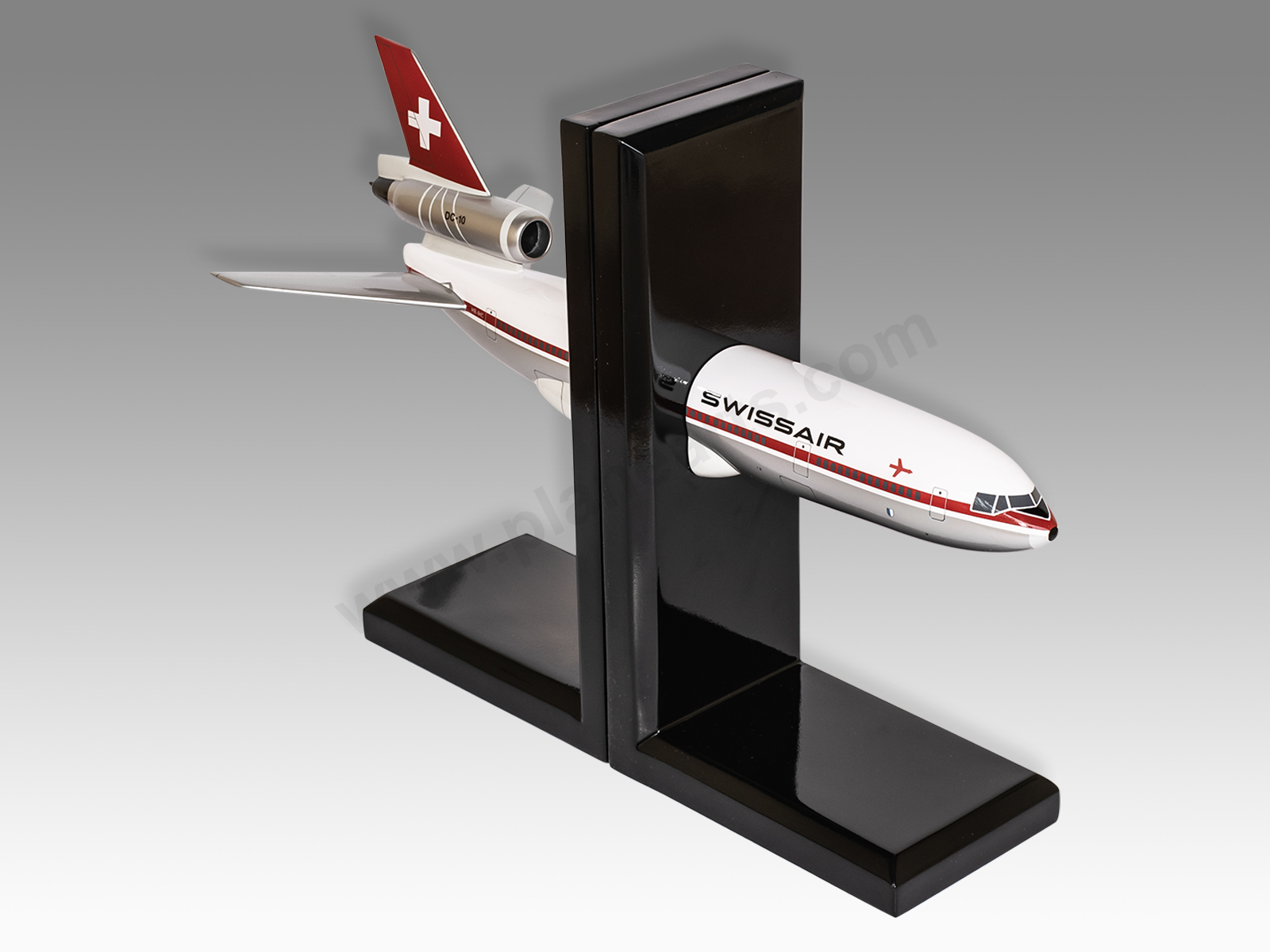
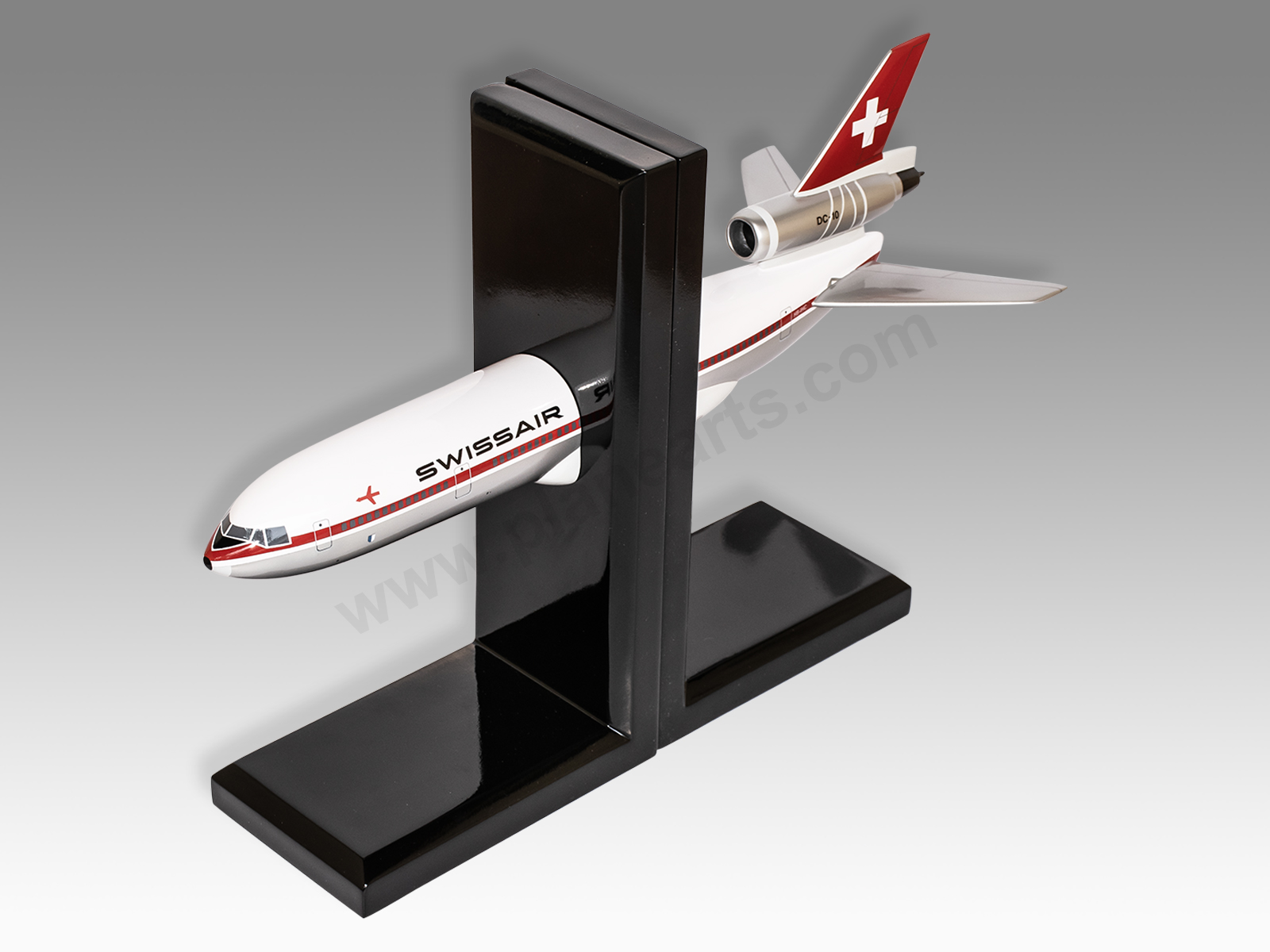
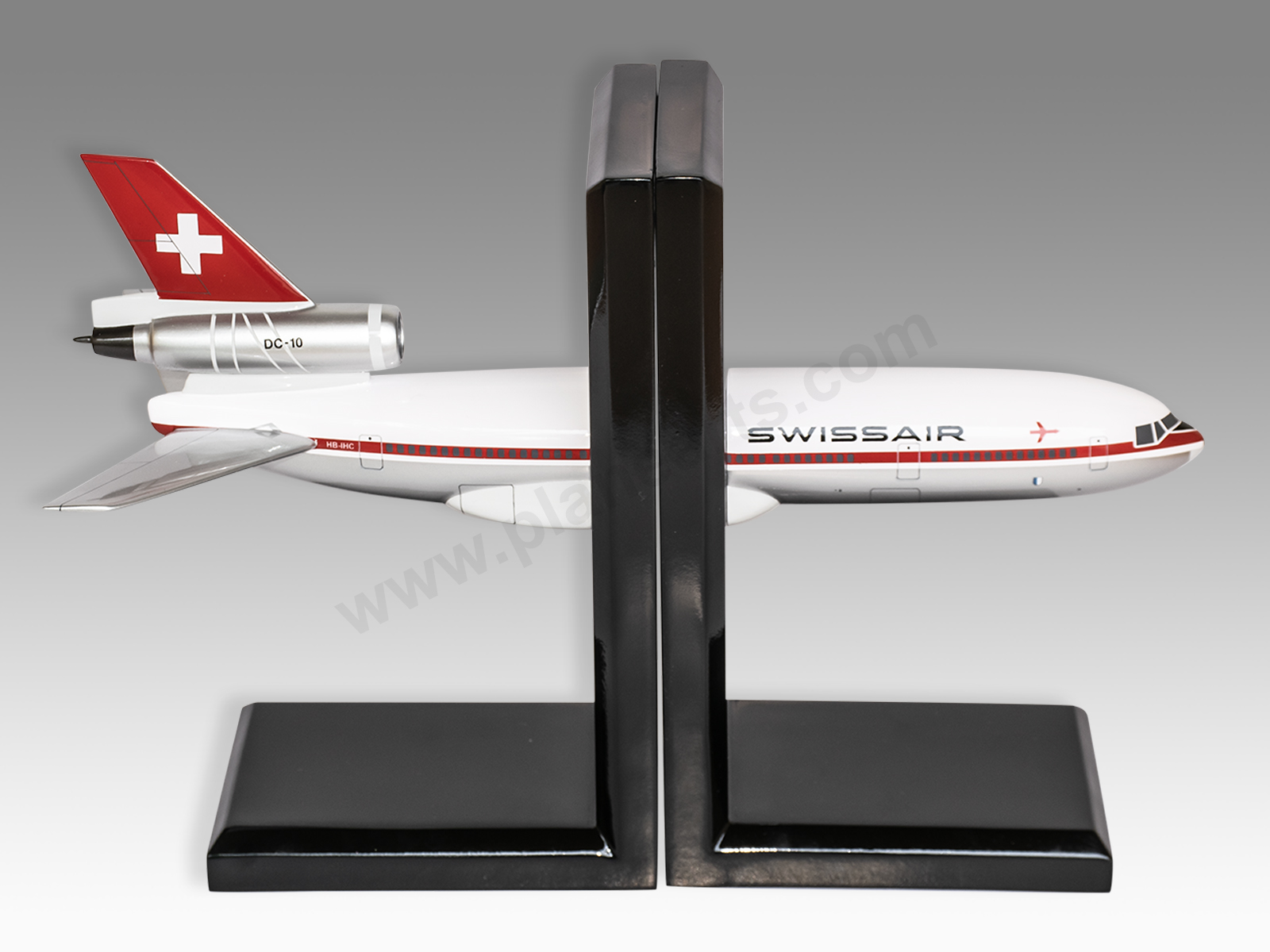
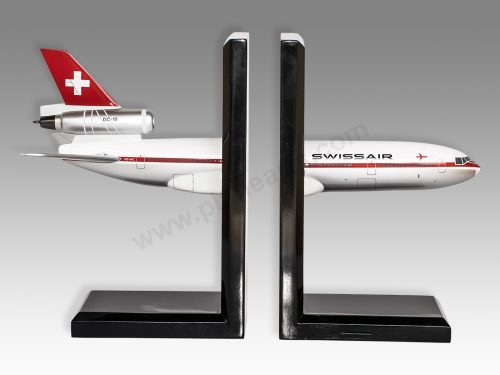

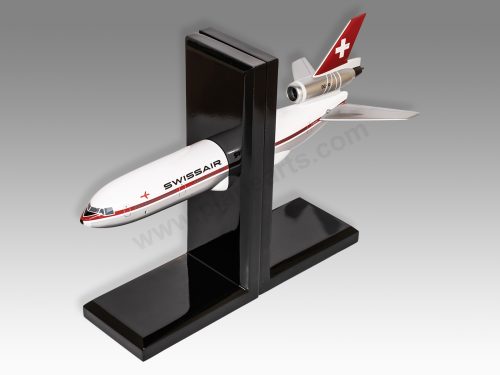
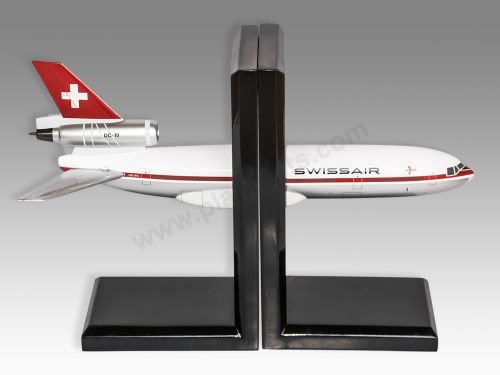
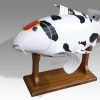
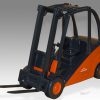
Reviews
There are no reviews yet.